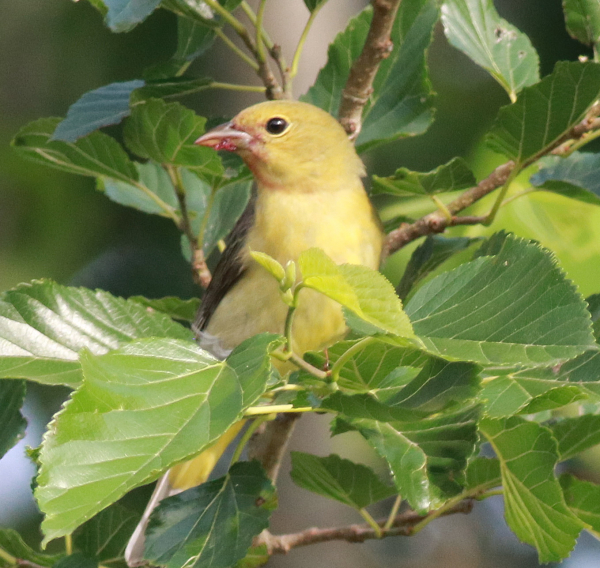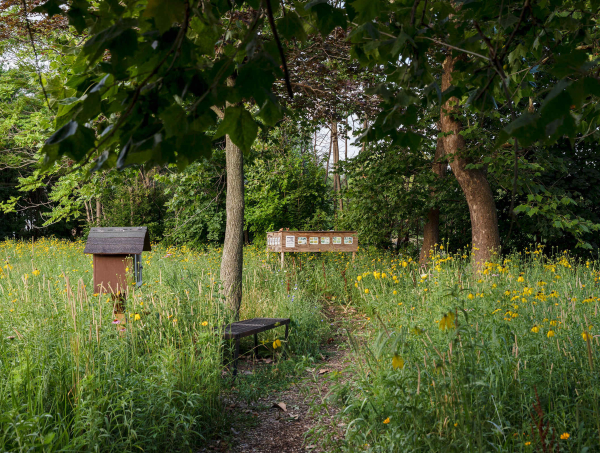
Detroit birders have already recorded 98 bird species in Callahan Park, including Scarlet Tanagers, an indication of the vitality of the landscaping renovations (photo by Paul Konrad)

Callahan Park adds green space and native plant habitats for birds and people in the heart of Detroit – the first of 5 parks being transformed, with more improvements in the works (photo by Elaine Cromie).
|
A few years ago, Detroit’s Callahan Park was indistinguishable from an abandoned lot, its overgrown turf grass covered with litter. Today however, Callahan Park is blanketed in a lush meadow, with walking paths winding through flowering native plants. Callahan became the first of 5 parks transformed through the initial phase of Detroit Bird City, a project led by Detroit Audubon in partnership with the city of Detroit. For conservationists, these parks are an opportunity to create grassland habitat for birds in decline, and they are relief for the city’s parks staff because the meadows need little upkeep.
The new habitat will take time to reach its full potential, but Detroit Audubon birders have already observed 98 bird species in Callahan Park, an indication of the vitality of the new landscaping. Community members have delighted in sharing the space with birds like Indigo Buntings and Scarlet Tanagers. “It’s a place you can really relax,” said Princess Dennis, vice president of the local community association.
The project also aims to support the people who live nearby: The redesigned parks welcome visitors with inviting features like walking paths, educational signs, park benches, and mini nature libraries. Detroit Bird City also offers free programs, such as guided birding walks, and native plant giveaways so residents can create their own backyard habitats. Project leaders are also expanding to other city properties, helping the parks department achieve its vision for 1,500 acres of wildlife habitat within Detroit.
While the city has been in economic recovery mode since its 2013 bankruptcy, some areas have rebounded more than others, and many of its more than 300 parks look much like Callahan Park once did. The new habitats will take time to reach their full potential, but overall it’s a building process. Detroit is a migration hotspot, particularly in the fall when birds funnel through the Detroit River corridor, explained Erin Rowan Ford, Michigan conservation manager for Audubon Great Lakes. “The fact that Detroit Bird City is helping to create some natural spaces with native plants can really benefit birds on their journey south,” she said.
They inched closer to that goal in July when Detroit Bird City planted 2 more acres at Callahan and launched the project’s next phase with a new 3-acre meadow at Riverside Park. Restoring these native grasslands is a perfect way to approach the city’s vacant land as an opportunity for birds and people, Detroit Audubon board member Diane Cheklich added; “We’re on a major flyway; there’s the Detroit River, and there are so many things we have going for us here.”
To learn more about Detroit Bird City and Detroit Audubon, refer to the original Audubon article online at These Native Meadows in Motown Aim to Boost Birdlife and Neighbors’ Well-Being | Audubon